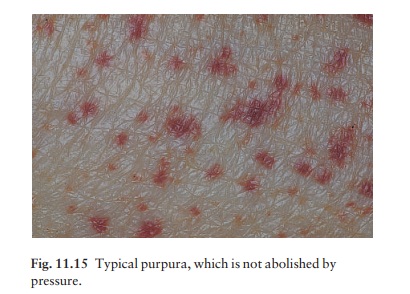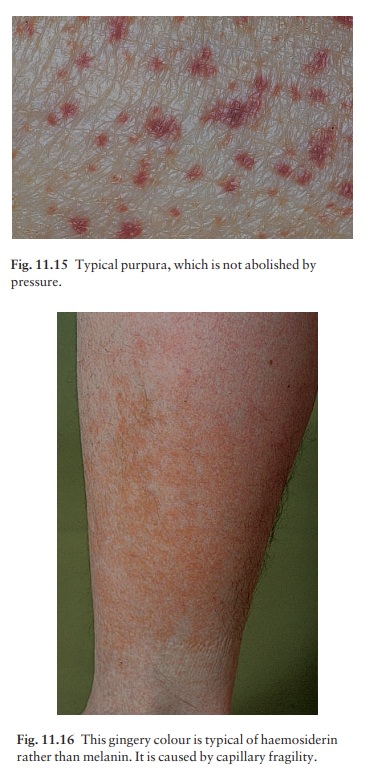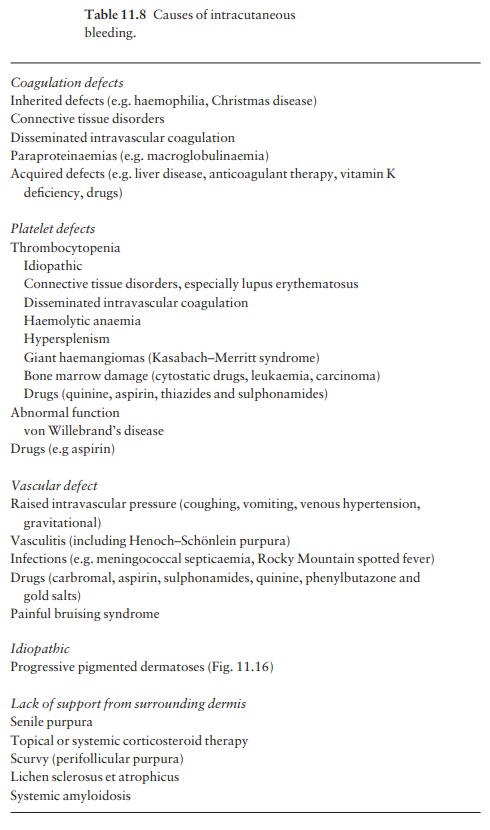Chapter: Clinical Dermatology: Disorders of blood vessels and lymphatics
Purpura - Venous disease

Purpura
Purpura (Fig. 11.15), petechiae and ecchymoses may be caused by a coagulation or platelet disorder, or by an abnormality of the vessel wall or the surrounding dermis. Some common causes are listed in Table 11.8. In general, coagulation defects give rise to ecchymoses and external bleeding. Platelet defects present more often as purpura, although bleeding and ecchymoses can still occur. Vasculitis of small vessels causes pur-pura, often palpable and painful, but not bleeding; this is discussed earily. Purpura from vasodi-latation and gravity is seen in many diseases of the legs, especially in the elderly (defective dermis around the blood vessels), and seldom requires extensive investigation.
Cryoglobulinaemia is a rare cause of purpura, which is most prominent on exposed parts. It may also cause cold urticaria and livedo reticularis.
The
condition may be idiopathic, or secondary to myeloma, leukaemia, a previous
hepatitis C infection or an autoimmune disease.


Investigations
The
most common cause of purpura is trauma, espe-cially to the thin sun-damaged
skin of elderly forearms. When purpura has no obvious cause, investigations
should include a platelet count, prothrombin time, activated partial
thromboplastin time (APTT), a full blood count and biochemical screen.
Electrophoresis is needed to exclude hypergammaglobulinaemia and
paraproteinaemia. Cryoglobulinaemia should also be excluded. To help detect a
consumptive coagulopathy, a coagulation screen, including measurement of
fibrino-gen and fibrin degradation products, may be necessary. The bleeding
time, and a Hess tourniquet test for cap-illary fragility, help less often.
Skin biopsy will confirm a small vessel vasculitis, if the purpura is palpable.
Treatment
Treat
the underlying condition. Replacement of re-levant blood constituents may be
needed initially. Systemic steroids are usually effective in vasculitis .
Related Topics